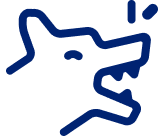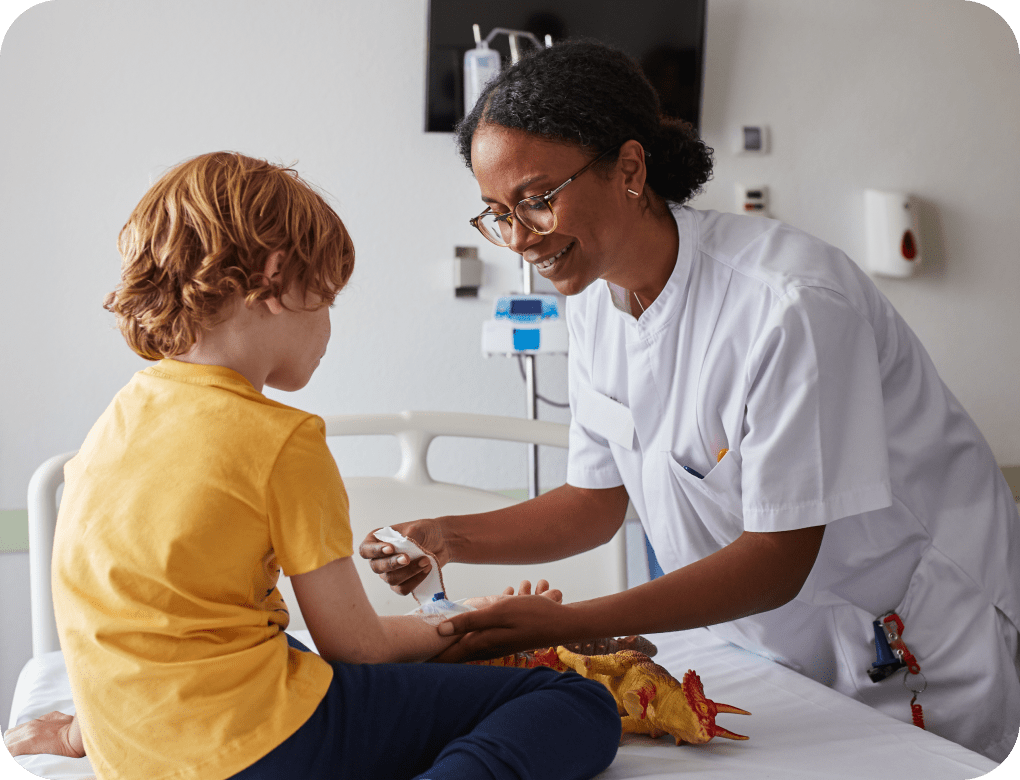Assess Before You Start
In order to properly treat an injury, you should to take a minute or two to figure out exactly what you’re dealing with.
Wash your hands.
Unwashed hands may carry germs, bacteria, and dirt, so always wash and dry your hands thoroughly first. If someone else has the injury, double down on safety and wear disposable gloves—they prevent the transmission of viruses and other infections through blood.
Understand the severity.
If there’s bleeding, where it’s coming from is more important than the amount of blood. Some minor cuts at the skin’s surface may bleed profusely but shouldn’t cause concern, while you’ll want to get emergency help if it involves important veins or arteries.
Watch for signs of shock.
Shock requires emergency care. You should keep an eye out for:
Losing consciousness
Feeling dizzy or lightheaded
Having trouble standing
Being confused or less alert
Nothing Major Here: Simple Steps for Minor Injuries
We’ll say it again because it’s that important—make sure your hands are clean before starting. Wear medical gloves if treating someone else.
1. Stop the Bleeding
For 5–10 minutes, apply gentle pressure with a sterile gauze pad or clean cloth. If the injury bleeds through, add another layer or two. Elevating the wound above your heart helps slow bleeding.
2. Clean the Wound
Start by rinsing the injury under running water for a few minutes. Then wash around it with soap, but keep soap out of the wound. Alternatively, you could also use a saline solution or BAND-AID® Brand Antiseptic Wash.
Avoid using hydrogen peroxide, iodine, and cotton balls or swabs1 because these products can cause irritation.
3. Remove Debris
Clean a pair of tweezers with alcohol and use them to remove any dirt, glass, or debris left after washing. If there are large pieces embedded in the wound, do not remove and consult a doctor.
4. Pat Dry
Use a clean cloth or gauze to gently pat the skin dry. Don’t use a cotton ball or swab as strands of it may get stuck in the wound.
5. Treat with Antibiotic
Apply a thin layer of NEOSPORIN® antibiotic ointment to help prevent infection and keep the wound moisturized. This reduces the chance of scarring and should help it heal quicker.
6. Protect
Injuries heal faster when they’re covered—it’s a fact! Protect yours with an adhesive bandage or with sterile gauze and tape. Replace the dressing once a day, or sooner if it gets wet or dirty.
Know when to see a doctor
While most minor wounds can be treated at home, some should be evaluated by medical professionals in order to prevent infection and ensure you heal properly.

Not sure what to do?
Call our Nurse Hotline to speak with a medical professional.
Seek help for:

Cuts that are very deep, are more than ½” long, are gaping open, or have jagged edges

Puncture wounds and/or deep injuries where you suspect a bone may be broken

Injuries that cannot be properly cleaned or where glass or dirt is trapped inside

Cuts on the face, especially when close to the eyes

Bites from animals or humans

Cuts, scrapes, or burns that are not healing properly, even with routine and proper at-home care

Injuries involving metal or rust if you haven’t had a tetanus shot in the last 5 years
Cleaning & Caring for Head Wounds

Even a minor cut on your head can result in heavy bleeding because the face and scalp have so many blood vessels close to the skin’s surface. Most small cuts on the head can be treated at home by following the steps outlined above, but get immediate emergency help if the injury:
Is deep enough to pierce the skull.
Involves the eyes in any way.
Has deformed the skull in any way.
Shows any bone fragments.
Cleaning & Caring for Puncture Wounds

These wounds tend to be narrow and can be deep. If it doesn’t look too big or deep, hold it under running water, and either wash or soak the puncture area for 10-15 minutes before applying pressure and bandaging. Watch it carefully for signs of infection as it heals.
Get immediate medical help if your wound:
Keeps bleeding after a few minutes of direct pressure.
Is the result of an animal or human bite.
Is deep and dirty.
Is caused by a metal object.
Is on your head, neck, scrotum, chest, or abdomen.
Is deep and over a joint
Are you up to date with your tetanus shot?
It’s not just rusty nails that lead to tetanus, AKA lockjaw. Any wound is susceptible. The best prevention is a tetanus injection every 10 years. If you have a wound that is particularly deep or dirty, consider getting a tetanus shot if you haven’t had one in the past five years to be on the safe side.2 You should get it within 48 hours of your injury.
In Cases of Emergency

Cleaning and treating serious wounds should be reserved for medical professionals. But you can help reduce bleeding while you’re waiting on help. Here’s what you can do:
Have the bleeding person lie down.
Do not clean a deep or severe wound.
Apply steady pressure on the wound with sterile gauze or a clean cloth for a full 10 minutes.
If blood soaks through, layer on another one without lifting the first.
If there is an object lodged in the wound, apply pressure around it, not over it. And don’t remove the object. (It could be slowing bleeding.)
Keep a Kit at the Ready

A well-stocked first aid kit can make all the difference when an emergency hits—big or small. Here’s what we recommend keeping in your first aid kit to help close a wound quickly:
We have a number of kits that are packed and ready to go.




